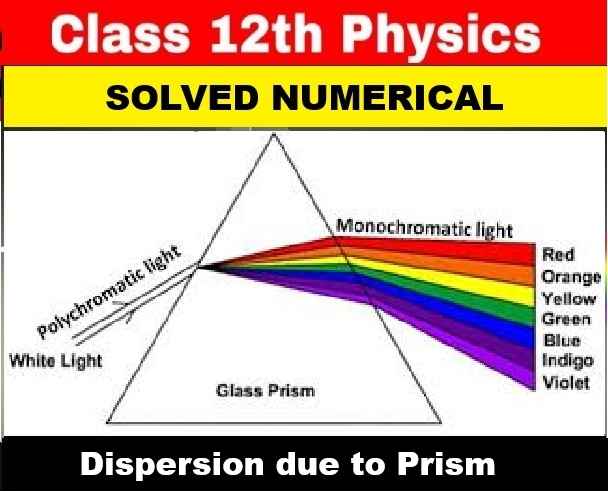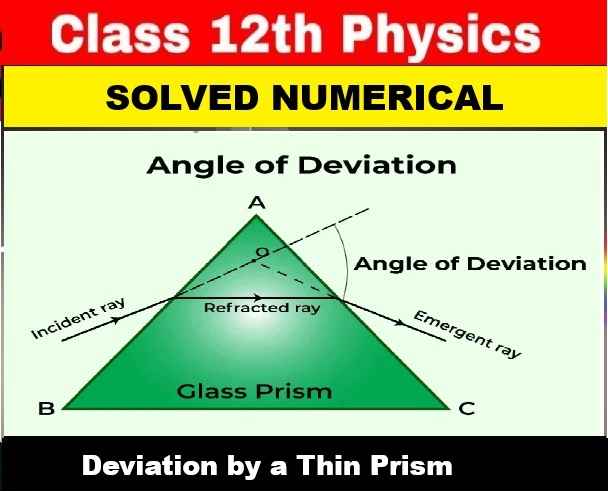Genetics Srijan Publications Solutions ICSE Class-10 Ch-3. We Provide Solutions of Very Short Answer Type and Short Answer Type of Exercise-3 Genetics Srijan Publications ICSE Class-10 Ch-3. Visit official Website CISCE for detail information about ICSE Board Class-10.
Genetics Srijan Publications Solutions ICSE Biology Class-10 Ch-3
| Board | ICSE |
| Publications | Srijan Publications |
| Subject | Biology |
| Class | 10th |
| Writer | Veer Bala Rastogi |
| Chapter-3 | Genetics |
| Topics | Solutions of Very short and Short Answers Questions |
| Edition | for 2022-2023 Academic Session |
A. VERY SHORT ANSWER TYPE QUESTIONS
Ch-3 Genetics Srijan Publications ICSE Class-10 Biology Solutions
Questions 1: Fill in the blanks with suitable words.
(a) Dissimilarities in related organisms or between parents and offspring are called ….variation……..
(b) Main cause of heritable variations is ….mutation……..
(c) A woman heterozygous for a sex-linked trait is called ……………….
(d) Chromosomes are described as ….Unit... of heredity.
(e) Genetic composition of an organism represents its …The genotype……
(f) Hemophilia and color blindness are ….X chromosome linked recessive gene……..
(g) Various forms of a gene that occupy the same locus in homologous chromosomes are called …alleles…..
(h) The part of the cell associated with heredity is ….Chromosome…….
(i) Human cells have …..23..……… pairs of chromosomes.
(j) The sex chromosomes in a woman or a female child are ….XX…..
(k) Gametes are …..Haploid....
Questions 2: State whether the following statements are true or false. If false, rewrite the correct form of statements.
(a) Hereditary factors are also called determiners or genes
(b) Genes are located in the chromosomes in a linear fashion
(c) The number of pairs of autosomes in man is 22.
(d) Mendel selected garden pea plants because they show cross-pollination by insects.
Answer :
(a) True
(b) True
(c) True
(d) False, They show self cross-pollination
Questions 3: Define the following terms:
(a) Phenotype
(b) Monohybrid cross
(c) Mutation
(d) Allele
(e) Gene
(f) Sex chromosomes
(g) Homozygous
Answer :
(a) Phenotype refers to an individual’s observable traits, such as height, eye color and blood type. A person’s phenotype is determined by both their genomic makeup (genotype) and environmental factors.
(b) A monohybrid cross is the hybrid of two individuals with homozygous genotypes which result in the opposite phenotype for a certain genetic trait.” “The cross between two monohybrid traits (TT and tt) is called a Monohybrid Cross.” Monohybrid cross is responsible for the inheritance of one gene
(c) A Mutation occurs when a DNA gene is damaged or changed in such a way as to alter the genetic message carried by that gene. A Mutagen is an agent of substance that can bring about a permanent alteration to the physical composition of a DNA gene such that the genetic message is changed.
(d) An allele is a variant form of a gene. Some genes have a variety of different forms, which are located at the same position, or genetic locus, on a chromosome. Humans are called diploid organisms because they have two alleles at each genetic locus, with one allele inherited from each parent
(e) The basic unit of heredity passed from parent to child. Genes are made up of sequences of DNA and are arranged, one after another, at specific locations on chromosomes in the nucleus of cells.
(f) A sex chromosome is a type of chromosome involved in sex determination. Humans and most other mammals have two sex chromosomes, X and Y, that in combination determine the sex of an individual.
(g) The presence of two identical alleles at a particular gene locus. A homozygous genotype may include two normal alleles or two alleles that have the same variant.
Questions 4: Give one word for the following:
(a) Males having only one X-chromosome—-X-linked recessive diseases
(b) True breeding individuals that produce offspring only of the same type.–homozygous
(c) Pair of genes responsible for a particular characteristic of an individual…alleles..
(d) A substance that transmits characteristics from parent to offspring….DNA…
(e) A X-linked disease found in humans…hemophilia….
(f) A pair of chromosomes carrying dissimilar alleles for a particular character…..heterozygous/non-homologous chromosomes…
(g) The genetic constitution of an organism…genotype….
(h) Type of gene which in the presence of a contrasting allele is not expressed….Recessive….
B. Short Answer Type Questions.
Genetics Srijan Publications Solutions ICSE Class-10 Biology Ch-3
(Page 38)
Questions 1. Answer the following questions:
(a) What do you mean by the statement 1ike begets like’.
Ans:- Like begets like” refers to a phenomenon of inheritance in which the transfer of genetic characteristics takes place from the parents to the offspring through heredity. Thus, both the parent and the offspring are alike in their genetic composition
(b) In Mendel’s monohybrid cross, what is the difference between genotypic ratio and phenotypic ratio and why?
Ans:- The key difference between phenotype and genotype ratio is that the phenotype ratio is the relative number of or the pattern of the offspring manifesting the visible expression of a particular trait while the genotype ratio is the pattern of offspring distribution according to the genetic constitution
(c) What are the differences between a monohybrid cross and a dihybrid cross?
Ans:-Differentiate Between Monohybrid and Dihybrid Cross
| Dihybrid cross | Monohybrid cross |
| It is a cross between two pure lines or organisms to study the inheritance of two pairs of contrasting characters. | It’s a cross between two pure lines or organisms to study the inheritance of a single pair of contrasting characters. |
| The cross is carried out between individuals with different alleles for two gene loci of interest. | The cross is carried out between homozygous individuals with different alleles for a single gene locus of interest. |
| The phenotypic ratio in the F2 generation is 9:3: 3:1 | The phenotypic ratio in the F2 generation is 3:1 |
(d) Why did Mendel select garden pea for hereditary cross breeding?
Ans :- Gregor Mendel chose the pea plants for his experiments because the garden pea is an ideal subject in the study of genetics for the following reasons: presence of observable traits with contrasting forms. produces many offspring in one cross. short life cycle.
(e) Give the dihybrid ratio. Name and state the law which explains the same.
Ans :- Dihybrid ratio: 9:3:3:1. Law of independent assortment explains it. Law of independent assortment states that in a dihybrid cross, the distribution of the. members of one pair into the gametes is independent of the distribution of the other.
(f) What are autosomes? How many autosomes are present in human beings?
Ans :- An autosome is one of the numbered chromosomes, as opposed to the sex chromosomes. Humans have 22 pairs of autosomes and one pair of sex chromosomes (XX or XY). Autosomes are numbered roughly in relation to their sizes
(g) Name the following:
(i) Two sex-linked diseases in males.
Ans : -(i) Haemophilia, (ii) Red-green colour blindness
(ii) Any two human traits that follow Mendel’s laws of inheritance..
Ans :–..sickle-cell anaemia, colour blindness and haemophilia
(h) State Mendel’s law of segregation..
Ans :- During the formation of gamete, each gene separates from each other so that each gamete carries only one allele for each gene.” Law of segregation is the second law of inheritance.
(i) What is the Mendel’s first law? or State Mendel’s law of dominance
Ans:- Mendel’s First Law – the law of segregation; during gamete formation each member of the allelic pair separates from the other member to form the genetic constitution of the gamete. Confirmation of Mendel’s First Law Hypothesis. With these observations, Mendel could form a hypothesis about segregation
(j) State Mendel’s law of independent assortment.
Ans:- Mendel’s law of independent assortment states that the alleles of two (or more) different genes get sorted into gametes independently of one another. In other words, the allele a gamete receives for one gene does not influence the allele received for another gene.
(k) What is dihybrid ratio?
Ans:- 9:3:3:1
Questions 2. Give differences between the following :
(a) Phenotype and Genotype
Ans :- The terms Genotype and phenotype may sound similar but there is a huge difference between genotype and phenotype. The genotype is a set of genes in DNA responsible for unique trait or characteristics while the phenotype is the physical appearance or characteristic of an organism.
(b) Pure and Hybrid
Ans :- purebreds are the offspring that result from mating between genetically similar parents while hybrids are the offspring that are the result of mating between two genetically dissimilar parents.
(c) Recessive and Dominant
Ans :- Dominant traits are always expressed when the connected allele is dominant, even if only one copy of the dominant trait exists. Recessive traits are expressed only if both the connected alleles are recessive
(d) Autosomes and Sex chromosomes
Ans:-Autosomes differ from sex chromosomes, which make up the 23rd pair of chromosomes in all normal human cells and come in two forms, called X and Y. Autosomes control the inheritance of all an organism’s characteristics except the sex-linked ones, which are controlled by the sex chromosomes
— : End of Ch-3 Genetics Srijan Publication ICSE Class-10 Biology Solutions :–
Return to :- Srijan Publication ICSE Biology for Class 10 Solutions
Thanks


